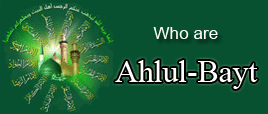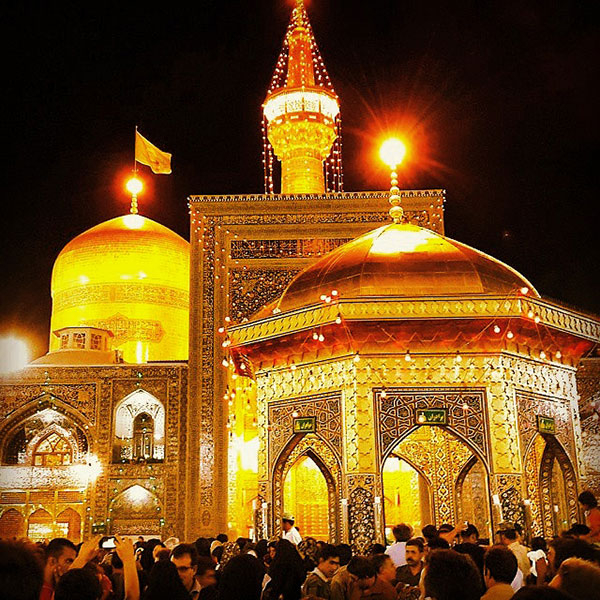Compiled By: Syed Ali Shahbaz
Norouz is the ancient Iranian feast which has been common since long ago in the Iranian cultural and civilization domain from India to Central Asia. This spiritual feast, in view of its cultural and traditional values, was recognized as precious international heritage by the UN in 2010 and the first day of Eid Norouz was recognized as the international day of Norouz.
Now this feast is held not only in Iran, Central Asia and Caucasia and other Middle East states, but it provides an opportunity for all world people to become more familiar with the deeply rooted culture of Norouz. This celebration with its diverse traditions ushers in hope, peace, friendship and happiness for millions of people all over the world. On the threshold of the New Year we are going to talk about Norouz traditions in Iran.
Some of Norouz traditions which spread the smell of spring and freshness everywhere have always been alive ever since their initiation. Among the common traditions on the last days of the year is house cleansing. As winter nears its final days, one can manifestly see a special vividness and exuberance among people of ages and from all walks of life. By cleaning houses, public places and streets everybody ties to welcome the spring. Actually house cleansing at the end of the year is a symbol of removing uncleanness from houses and providing a clean atmosphere for welcoming the New Year, particularly one regards the fact that Islam stresses cleanliness and Prophet Mohammad (SAWA) has considered it a sign of faith. All family members take part in house cleaning.
Among other traditions on the final days of the year is the New Year’s shopping which includes buying of clothes, nuts, fruits, cookies and even house appliances. On the last days of the year, there is a hubbub of people swarming in markets of all cities and towns. All like to wear new clothes in the New Year and offer the best staff to their guests. Eid shopping provides a market boom for both sellers and buyers.
Some 10 days or two weeks before Norouz, people plant grains such as wheat and lentil in small and big plates or on pottery jugs to put them in the Haft Sin Cloth on the start of the New Year. Moreover, spring flowers and saplings are grown in green houses. The green wheat and fresh flowers enliven houses. Cities assume a new smell and color by colorful flowers and sapling planted by municipal officials.
Helping the destitute is also among the good traditions of Iranians on the eve of the New Year. On the threshold of the New Year, unanimous efforts are made for assisting the poor across Iran. Based on their religious teachings, the Iranian people believe that solving the problems of the fellowmen especially on the final days of the year is a valuable deed and liked by God and every Muslim should do it as per his possibilities. Therefore at the end of every year, some of the governmental organizations in collaboration with people try to assist the needy to create a happy Norouz for them.
On the commencement of the New Year, Iranians all over the world gather around the Haft Sin Cloth and start the New Year with love and happiness.
Setting the Haft Sin Cloth is one of the fascinating traditions of Norouz and a symbol of freshness and happiness. It is an opportunity for gathering together at the joyous moments of the New Year.
Seven items are put on the Haft Sin table which start with the letter S and each of which has a specific meaning: They are as follows:
1-Sabzeh: Green wheat sprouts (symbol of abundance)
2-Samanu: Sweet pudding (symbol of sweetness of life)
3-Sib: Apple (symbol of beauty, health and fertility)
4-Senjed: Oleaster (symbol of love)
5-Somaq: Sumac berries (symbol of a new dawn)
6-Sir: Garlic (symbol of protection against illness and evil)
7-Serkeh: Vinegar (symbol of longevity and patience)
In addition to 7 items which start with S, Iranians put some other items like eggs symbolizing new life, mirror symbolizing sincerity and purity, water symbolizing blessing and light, red fish symbolizing life and movement, coin symbolizing prosperity and candle symbolizing light and heat.
Hyacinth and catkin comprise other items of the Haft Sin table. People also put candy and sweets on the table. But besides all these, the holy Qur’an the Divine Book of Muslims has a special status on the Haft Sin table and grants it a specific spirituality.
At the start of the New Year people recite the following supplication:
Ya Moqallab al-qoloub wa’l-absar,
Ya Modabbar al-layl wa’n-nahar
Ya Mohawwal al-howl wa’l-ahwal
Hawwil halana ila ahsan il-haal,
O Rotator of hearts and eyes.
O Regulator of the day and night,
O Transformer of state and conditions
Turn our state into the best of states.
Then they recite ayahs from the holy Qur’an. Usually after the start of the year, the elders of family give money or a gift as Eidi to the family members and they eat sweets and congratulate the Eid to each other. It is good to know that some of the Iranian families spend the moment of turning of the New Year at the holy shrines and the Imamzadehs or the descendents of the Prophet Mohammad (SAWA) and also the graveyards to benefit from the spiritual climate. Being in such sites at the auspicious moments of the New Year along with prayer and supplications enlightens people’s hearts. Therefore every year the pilgrimage sites especially the holy shrine of Imam Reza (AS) in holy Mashhad, the holy shrine of Hazrat Masumeh (Peace upon her) in Qom, the holy shrine of Shah Cheragh (Peace upon him) in Shiraz and other mausoleums are full of the faithful.
After the start of the New Year, the custom of visiting relatives and friends starts and continues till 13th of Farvardin. Younger ones consider their duty to visit the elder ones. Therefore children usually start visiting grandpas and grandmas and their parents. In the beginning days of the New Year visits are exchanged among friends and relatives which are accompanied with giving presents and eating fruits, nuts and cookies. If somebody has just lost a member, relatives and friends go to the bereaved family and while reciting surah Fateha and praying, ask forgiveness for the deceased one. Some persons visit hospitals and orphanages to share their happiness with them.
888888888888888888888888888888888888888888888888888888888888888888888888888888888888888888888888888888888888
Grand Ayatollah Seyyed Hussein Tabatabai Boroujerdi
Compiled By: Syed Ali Shahbaz
On March 30, 1961 AD, Grand Ayatollah Seyyed Hussein Tabatabai Boroujerdi, passed away in the holy city of Qom. After studying preliminary Islamic sciences in his hometown, Boroujerd, he left for the Najaf Seminary in Iraq, acquiring knowledge under the prominent Ulema of his time. He later on returned to Iran and conducted scientific and social activities.
In the year 1945, he went to the holy city of Mashhad and thereafter Qom, and became a Source of Emulation. Under his supervision, the Qom Seminary vastly expanded. At this time, Grand Ayatollah Boroujerdi gained the opportunity to introduce the rich Islamic culture globally and to take positive steps for the proximity and unity of Islamic denominations with the cooperation of other thinkers of the World of Islam.
His important measures include revival of important and valuable works of Islamic Ulema; compilation of numerous scientific and religious books; construction of mosques in Iranian cities; development of the Hamburg Mosque in Germany; and grooming of prominent students, such as the Father of Islamic Revolution, late Imam Khomeini (RA).
88888888888888888888888888888888888888888888888888888888888888888888888888888888888888888888888888888888888888
Christian edict against the Jews of Spain
Compiled By: Syed Ali Shahbaz
On March 30, 1492 AD, Queen Isabella of Castille and King Ferdinand II of Aragon issued the Alhambra Decree, ordering 150,000 Spanish Jews to convert to Christianity within three months, or face expulsion. This happened less than three months after the occupation of the Muslim emirate of Granada and the famous al-Hamra (Red Palace) by the Christians, who were notorious for their anti-Semitism, which means persecution of both Arabs and Israelites.
Jews had been living for several centuries under Muslim rule in Islamic Spain as "People of the Book"' and were given special status. Some of them had rose in the social hierarchy to become scholars and ministers. But with the gradual occupation of Islamic Spain by the Christian rulers, both Muslims and Jews found themselves persecuted and such measures were prevalent throughout Europe.
The punishment for any Jew who did not convert or leave by the deadline was death. The punishment for a non-Jew who sheltered or hid Jews was the confiscation of all belongings and hereditary privileges. Other Spanish Jews (estimates range between 50,000 and 70,000) chose to avoid expulsion by conversion to Christianity.
However, their conversion did not protect them from the Church’s hostility after the Spanish Inquisition came into full effect. Many of these "New Christians" were eventually forced to either leave the countries or intermarry with the local populace by the dual Inquisitions of Portugal and Spain. As a result many Jews migrated to the Muslim lands of North Africa. This edict against the Jews of Spain was in force till 16 December 1968, when the Second Vatican Council cancelled it. It is also worth noting that hundreds of thousands of Spanish Muslims were forcibly converted to Christianity in Spain, while hundreds of thousands of others were massacred, and many more expelled.
Jews in Europe
On February 14, 1349 AD, over a thousand Jews were publicly burned to death by Christian mobs while the remainder of their population was forcibly driven away from the German city of Strasbourg, as part of the pogroms, the Church used to frequently conduct against the followers of Judaism in Europe, at a time when Jews living in Islamic lands enjoyed all the freedom and privileges of Muslims, even rising to post of ministers. The massacre followed the deadly bubonic plague of 1348 which was blamed on the presence of Jews in Christian lands.
The practices and behaviour of the Jews was also partly responsible for such massacres, because the Jews played the role of money-lenders and manipulated the economy, which brought about serious problems. European chroniclers report that the Jews were so arrogant that they were unwilling to grant anyone else precedence, and those who dealt with them, could hardly come to an agreement with them.
This ruthlessness of the Jews, coupled with their slandering of Prophet Jesus (PBUH) and his Virgin mother, Mary (peace upon her), used to be the reason for their frequent massacres by Christians in Europe. Until the beginning of the 18th century, Jews were forbidden to remain in town in any European country after 10 pm, and heavy taxes were levied on them, including a special tax to be paid for any horse that a Jew would ride or bring into the city.
88888888888888888888888888888888888888888888888888888888888888888888888888888888888888888888888888888888888888
The Spanish Muslim theologian and poet, Ibn Abd Rabbihi
Compiled By: Syed Ali Shahbaz
On 18th of the Islamic month of Jamadi al-Awwal in 328 AH, the Spanish Muslim theologian and poet, Ahmad ibn Mohammad Ibn Abd Rabbihi, passed away. His great anthology, titled “al-Iqd al-Fareed” (The Unique Necklace), is a voluminous work divided into 25 sections. The 13th section is named the middle jewel of the necklace, and the chapters on either side are named after other jewels.
It is a masterpiece of Arabic literature. Although he was descended from Spanish Christian converts to Islam, spent all his life in Spain and did not travel to the Islamic East like some other Spanish Muslim scholars, it is evident from the contents that he was well versed in the affairs of the Eastern Islamic world extending into Khorasan, Central Asia and present day Pakistan.
He has also chronicled the merits of the Ahl al-Bayt or Infallible Household of Prophet Mohammad (SAWA) and detailed the seditious events in the early days of Islam when the caliphate was hijacked from the Prophet’s family. His poems are found scattered in many books, and here is a translation from Arabic of one of his couplets titled The White Complexion
“Never have I seen or heard of such a thing; a pearl that for modesty transforms itself into a cornelian.
“So white is her face, that, when you contemplate her perfection, you see your own face submerged in its clarity.”
88888888888888888888888888888888888888888888888888888888888888888888888888888888888888888888888888888888888888
Sultan Mohammad II, Fatih, the Ottoman Emperor, who conquered Constantinople
Compiled By: Syed Ali Shahbaz
On March 30, 1432 AD, Sultan Mohammad II, Fatih, the Ottoman Emperor, who conquered Constantinople and ended Byzantine or the Eastern Roman Empire, was born in Edirne, then the capital city of the Ottoman Turks. His father was Sultan Murad II. In 1453 at the age of 21 – two years after becoming Sultan – he conquered Constantinople, which was renamed Islambol, and is known as Istanbul today. It is said that when he entered the Byzantine capital and stepped into the ruins of the Boukoleon, known to the Ottomans and Iranians as the Palace of the Caesars, which was built over a thousand years before by Theodosius II, he recited the famous verse of Persian poetry from Ferdowsi’s Shahnameh:
“The spider weaves the curtains in the palace of the Caesars;
The owl calls the watches in the towers of Afrasiab.”
Sultan Mohammad Fatih, who reigned for 30 years, did not persecute the Christians and even allowed the Greek Orthodox Church to maintain its headquarters in Constantinople. On 1 June 1453, just three days after the fall of the city, the procession of the new Patriarch, Gennadius, passed through the streets where the Sultan received the Head of the Christian Church graciously and himself invested him with the signs of his office.
This ceremonial investiture would be repeated by all Sultans and Patriarchs thereafter until the end of Ottoman rule in 1923. The Ottomans divided their Empire into millets or subject nations, of which the Greek Christians were the largest, known as the Millet-e Roum. Sadly, when the Greeks, revolted against Ottoman rule with the support of Britain, France and Russia, during the 1820s and 1830s, they launched a general massacre of Muslims in what is now Greece, destroyed centuries of Islamic culture, and converted mosques into churches.
88888888888888888888888888888888888888888888888888888888888888888888888888888888888888888888888888888888888888
The prominent Iranian Sunni philosopher, theologian and mystic, Mohammad Ghazzali Tousi
Compiled By: Syed Ali Shahbaz
On 17th of the Islamic month of Jamadi al-Awwal in 450 AH, the prominent Iranian Sunni philosopher, theologian and mystic, Mohammad Ghazzali Tousi, was born in Tabaran in the vicinity of the city of Tous, near holy Mashhad in Khorasan Province, northeastern Iran. At the age of 28 years he became renowned as a Shafei jurisprudent, whose fame led the Seljuqid vizier, Khwaja Nizam ol-Molk Tousi, to invite him to join the royal court in Isfahan and later, take charge of Baghdad’s famous Nezamiyah Academy.
After several years in Iraq, he left for Syria, lived in Bayt ol-Moqaddas for some years, and after performing the Hajj pilgrimage, returned to his native Iran where he spent the rest of his life in near seclusion – as a Sufi – until his death in his hometown Tous. He was known as “Hojjat al-Islam” (Authority on Islam). He was proficient in theology and philosophy, and resorted to polemics against the “Batinis” at a time when secret Ismaili cells were winning adherents in Iran.
He stirred controversy through his work “Tahafat al-Falasafa” (Incoherence of the Philosophers), which is a criticism of the Iranian Islamic genius, Abu Ali Ibn Sina’s rational evaluation of Aristotle’s views and the contribution to Islamic philosophy by Abu Nasr Farabi. In response, the Spanish Muslim philosopher, Ibn Rushd (Averroes) wrote “Tahafut at-Tahafut” (Incoherence of the Incoherence), which is a refutation of Ghazali’s views, while in the subsequent century, the brilliant Iranian polymath, Khwaja Naseer od-Din Tousi wrote a highly acclaimed defence of Ibn Sina and Islamic philosophy.
Ghazali wrote mainly in Arabic, in addition to a few books in his native Persian including “Kimiya-e Sa’adat” (Alchemy of Happiness), which is actually a summary of his voluminous Arabic work “Ehya Oloum od-Din” (Revival of Religious Sciences).
88888888888888888888888888888888888888888888888888888888888888888888888888888888888888888888888888888888888888
















